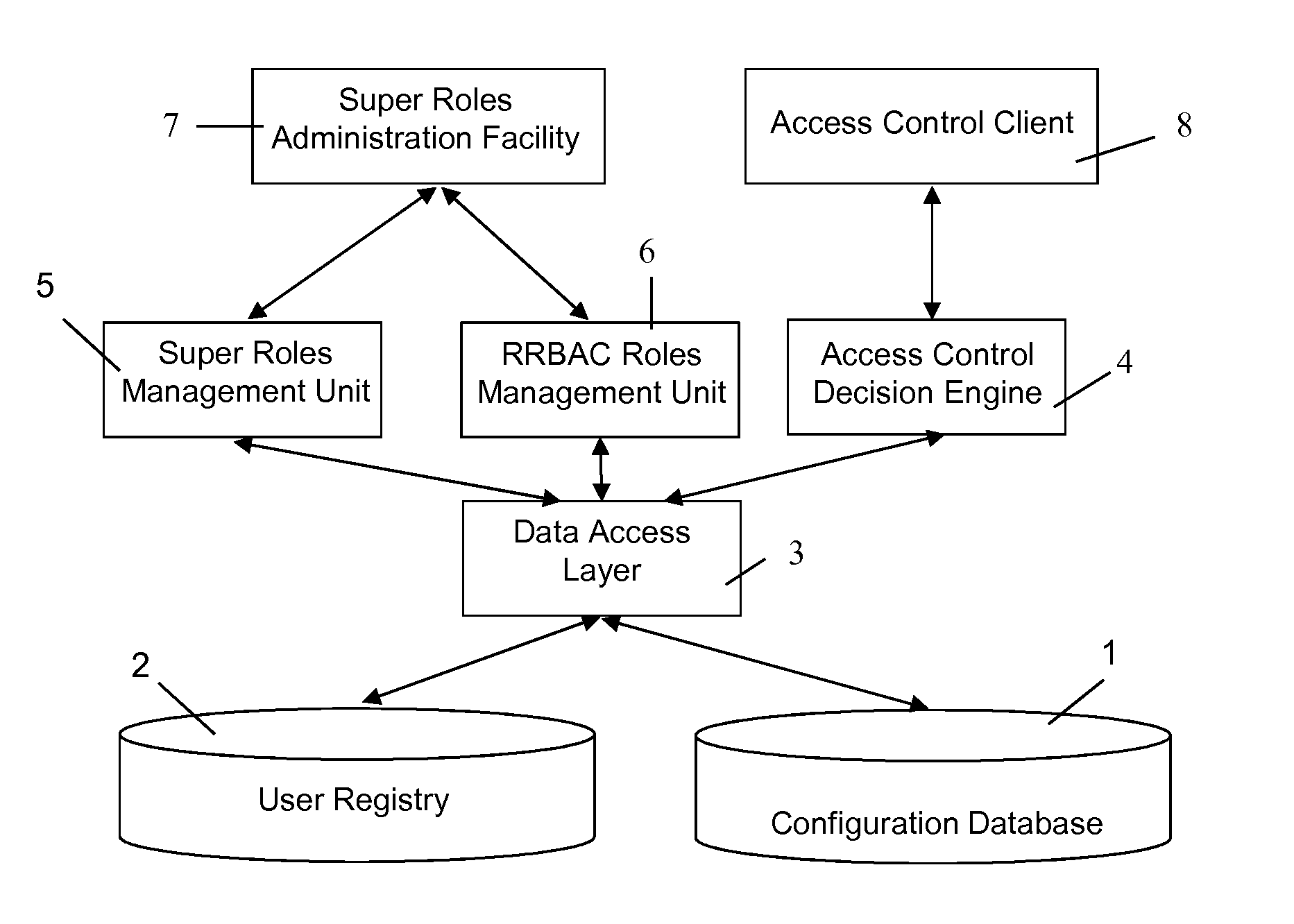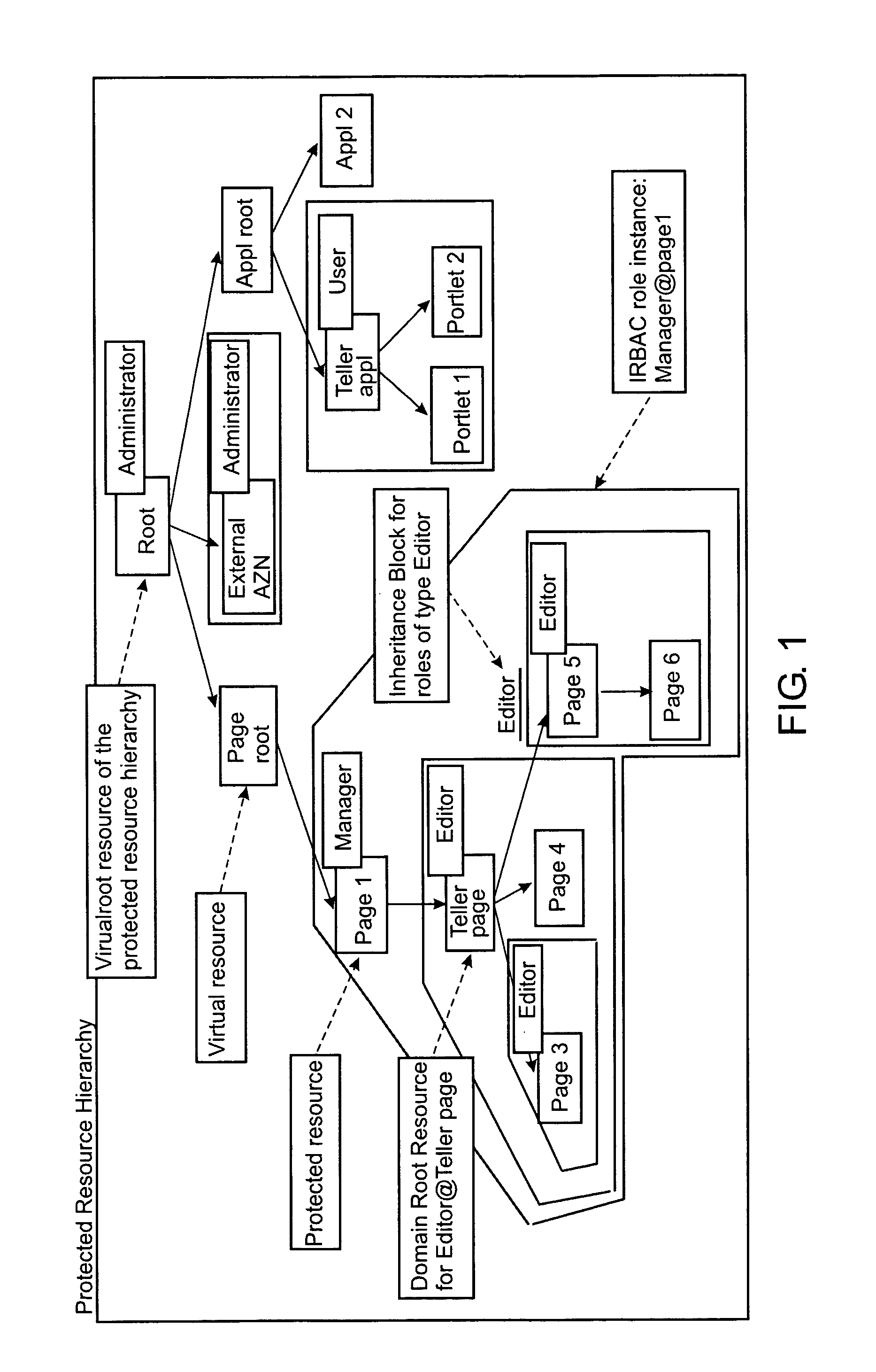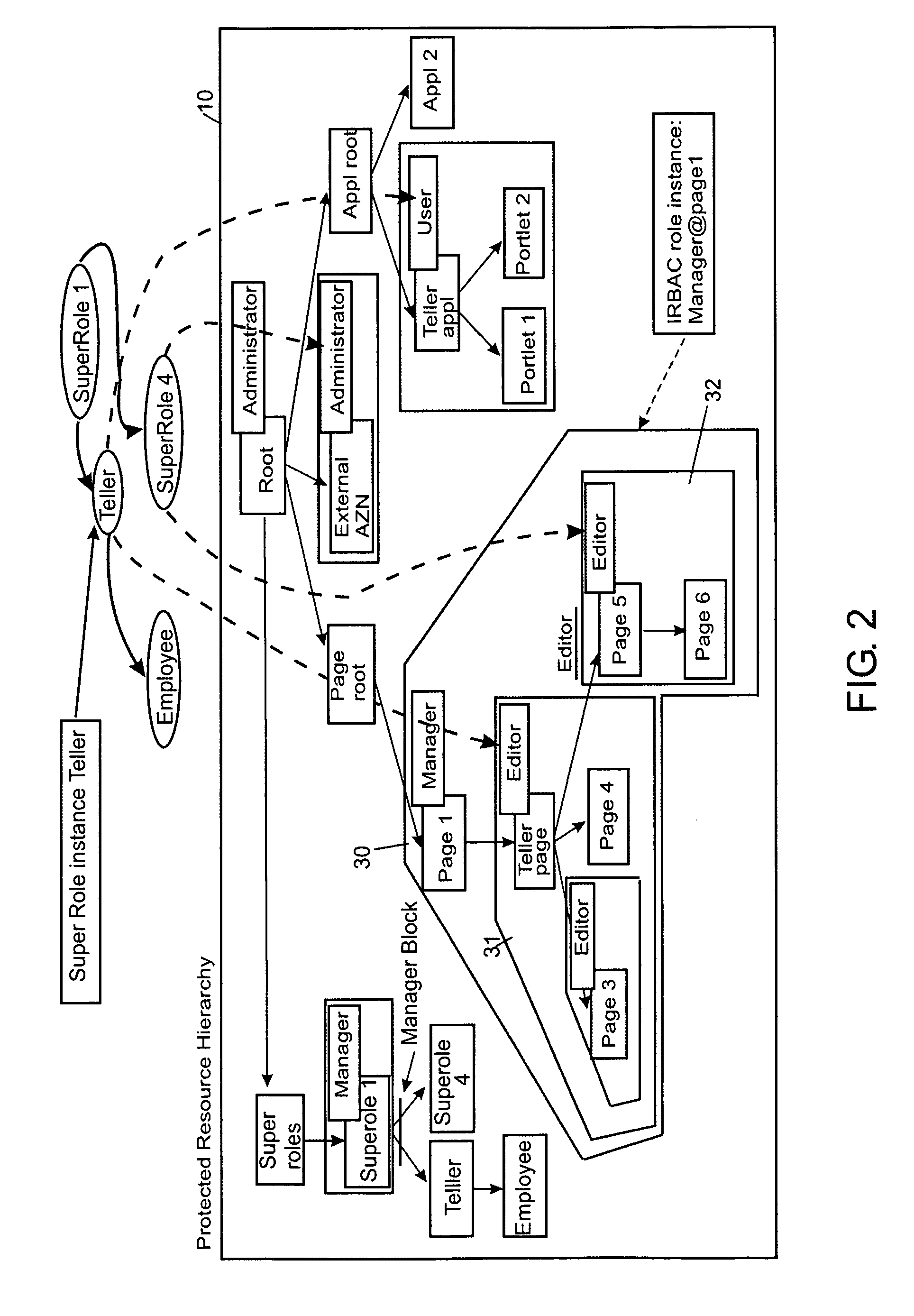Role-based access control system, method and computer program product
a security authorisation and access control technology, applied in the field of role-based access control systems, can solve the problems of inability to enforce different access control constraints on individual resource instances, inability to provide instance level resource protection, and difficulty in configuring or changing an acl, so as to simplify the consistent dynamic binding, reduce costs, and simplify the effect of access control administration
- Summary
- Abstract
- Description
- Claims
- Application Information
AI Technical Summary
Benefits of technology
Problems solved by technology
Method used
Image
Examples
Embodiment Construction
[0051]FIG. 1 describes a possible scenario according to the IRBAC model. Each role within the IRBAC model has an associated role type. A role type is a set of actions in the first place and models a specific way of interaction with resources depending on job responsibilities. The role type “Editor” for example could contain actions “View”, “Edit”, “Add Child”, etc., because editors are usually responsible for modifying resources and creating new resources. Furthermore, each role instance has an associated domain root resource. A naming convention for an IRBAC role instance is “role@domain root resource”. FIG. 1 depicts for example a role instance of type “Manager” tied to resource “page 1” called “Manager@page 1”. A set of permissions contained in a specific IRBAC role instance is defined by building the Cartesian Product between the set of actions contained in the corresponding role type and the set of resources contained in the sub-tree rooted at the role's domain root resource, t...
PUM
 Login to View More
Login to View More Abstract
Description
Claims
Application Information
 Login to View More
Login to View More - R&D
- Intellectual Property
- Life Sciences
- Materials
- Tech Scout
- Unparalleled Data Quality
- Higher Quality Content
- 60% Fewer Hallucinations
Browse by: Latest US Patents, China's latest patents, Technical Efficacy Thesaurus, Application Domain, Technology Topic, Popular Technical Reports.
© 2025 PatSnap. All rights reserved.Legal|Privacy policy|Modern Slavery Act Transparency Statement|Sitemap|About US| Contact US: help@patsnap.com



